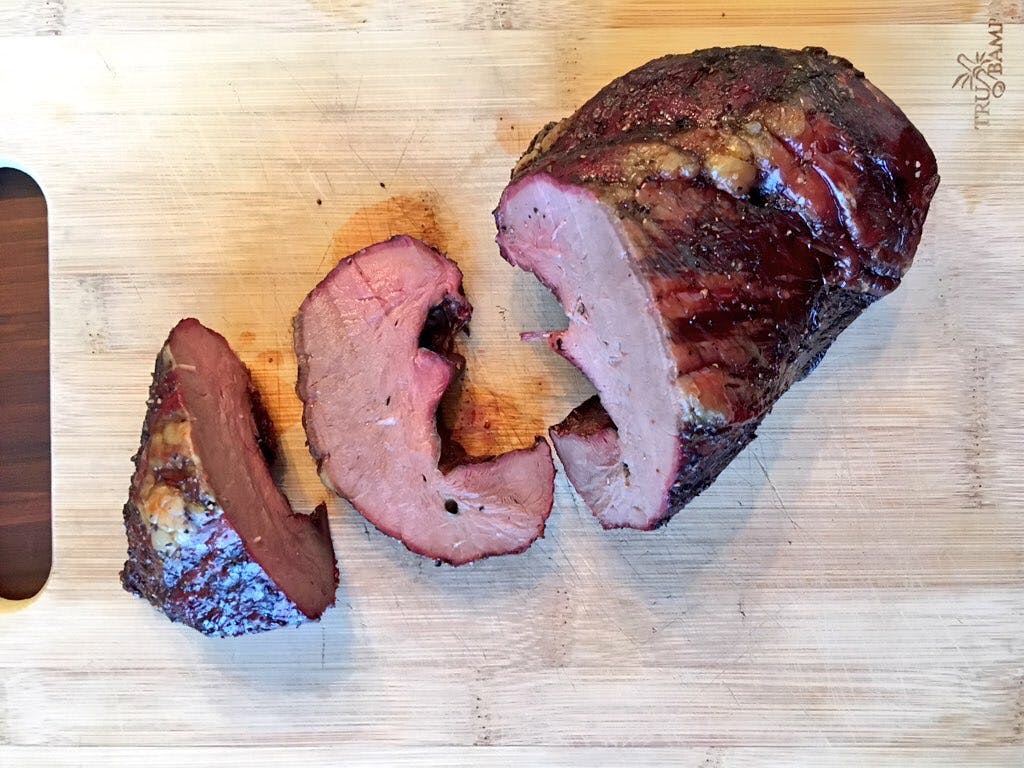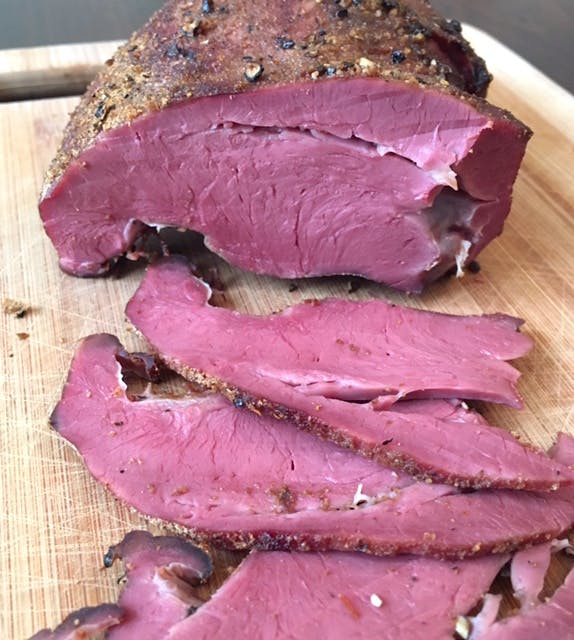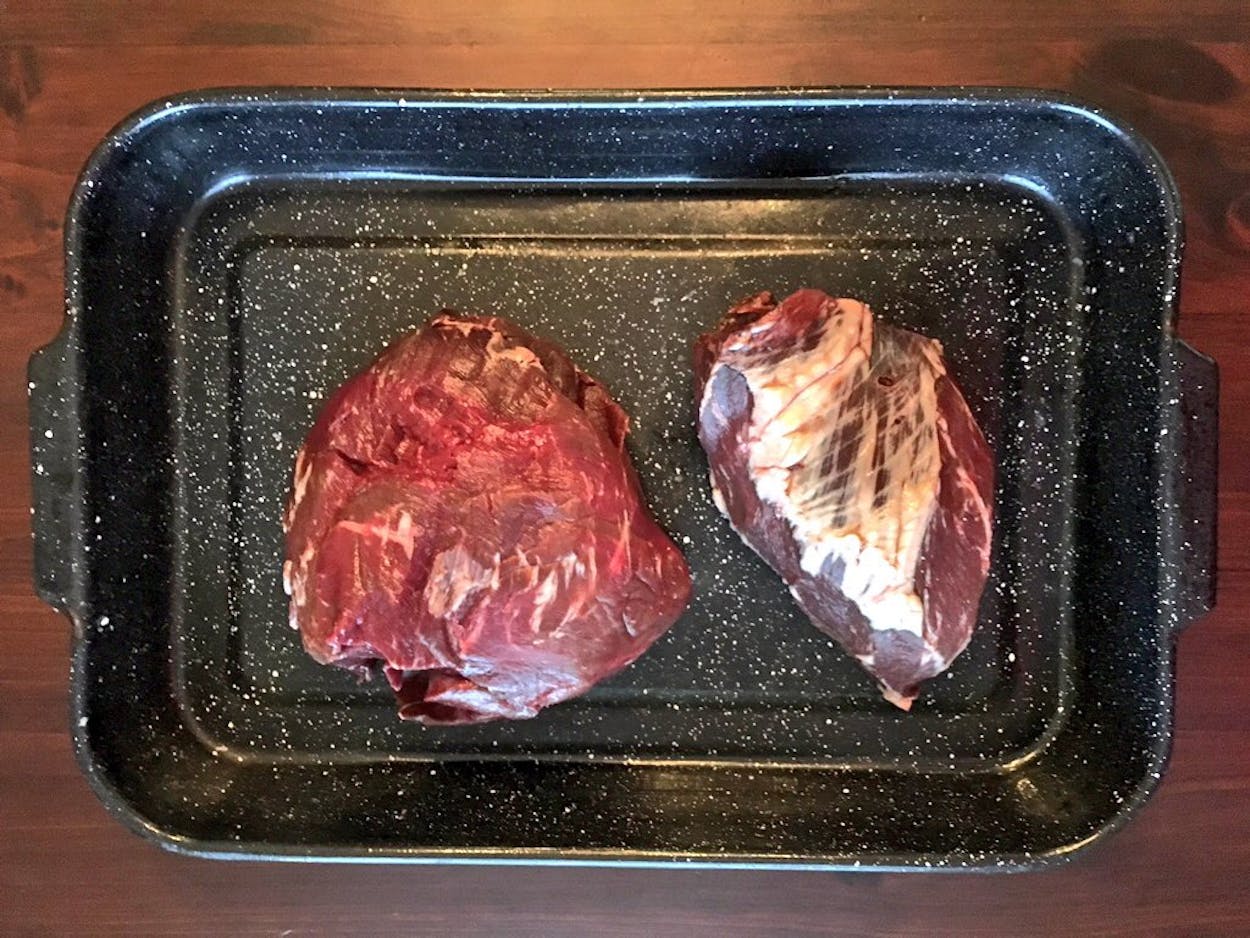I grew up with an aversion to beef offal. My mother would basically force-feed us beef liver, and I couldn’t stand the stuff. I still can’t, but when I asked a rep from 44 Farms about cuts they had a hard time selling, beef heart was near the top of the list. They sell so little of it that they offered me some to try for free. (You can find some at your local butcher shop for around $2 per pound.)
When I said “yes” to their offer, I didn’t realize it came in one size: a sixty-pound box of frozen beef hearts. After thawing for five days in the bottom of my refrigerator (my wife loved that), I had twelve whole beef hearts to work with. They weigh about five-pounds each before trimming And you should definitely trim them; whether smoked or braised, the hard surface fat never becomes palatable, so trim it off completely. The same goes for the gristle and sinew in the interior surface. It’s never going to be good, so just trim it down to the lean muscle.
And lean that muscle is. This cut has almost no intramuscular fat, which also makes it quite a bit healthier than your average burger patty. It also has a tremendous amount of iron, about three times the iron content of other muscle cuts. Those with anemia could only do better with beef liver (and you already know my thoughts on that). But all of this iron also gives the meat a strong metallic flavor after cooking, which I hoped to tame through smoking.

A simple rub of salt and pepper was the starting point. I smoked two raw hearts, one up to 170 degrees, another up to 195 degrees. Both were dry, especially the one cooked longer. I held back with a second batch that I took it to just 140. Some suggest to cook hearts medium rare, but I couldn’t even get a bark on them at that temp, even smoking them between 350 and 400 degrees. Either way, the flavor was still too intense, no matter how thinly I sliced it.
That got me thinking about a marinade, which is a popular way to tame the strong flavor of beef hearts. Better yet, why not jut make pastrami out of them? I placed six hearts in a standard pastrami brine. I left the surface fat on two of them to see if brining helped with the texture. (It didn’t, so trim thoroughly). After six days in the brine (another failed experiment was to push a couple hearts to forty days in the brine which only resulted in mold), they were ready for a black pepper and coriander rub. Don’t add salt to a pastrami rub. There’s already plenty in the meat.

These were hot smoked to 140 degrees internal, then rested briefly. The result was some of the best offal I’ve eaten. The pastrami brine and seasonings had tamed the metallic flavor. It also added some much needed moisture through the brining process. Thin slices were great from the hot beef hearts, but the flavor improved after chilling. Cold meat is always easier to slice thin anyway. My six-year-old daughter, who loves pastrami, even ate a sandwich of the stuff for lunch. I had pushed beef hearts beyond just palatable, and made some truly great pastrami with an unlikely cut.
RECIPE:
Make a batch of Michael Ruhlman’s pastrami brine. One gallon will work for a two trimmed hearts
Trim two beef hearts of all surface fat and interior gristle.
Place hearts in brine, and refrigerate for three days, turning at least once. (It will keep for a week or so in the brine.)
Smoke at 350 degrees for about an hour until internal temperature reaches 140 degrees.
Rest for 15 minutes and slice thin against the grain.
- More About:
- BBQ Recipes








